Illustrated guide to Mountain Bike Suspension Designs
- Posted on
- By Graham Pye
- Posted in anti squat, chain growth, design, dw link, efficiency, horst link, maestro, mechanical, mountain bike, pedalling, suspension
- 0
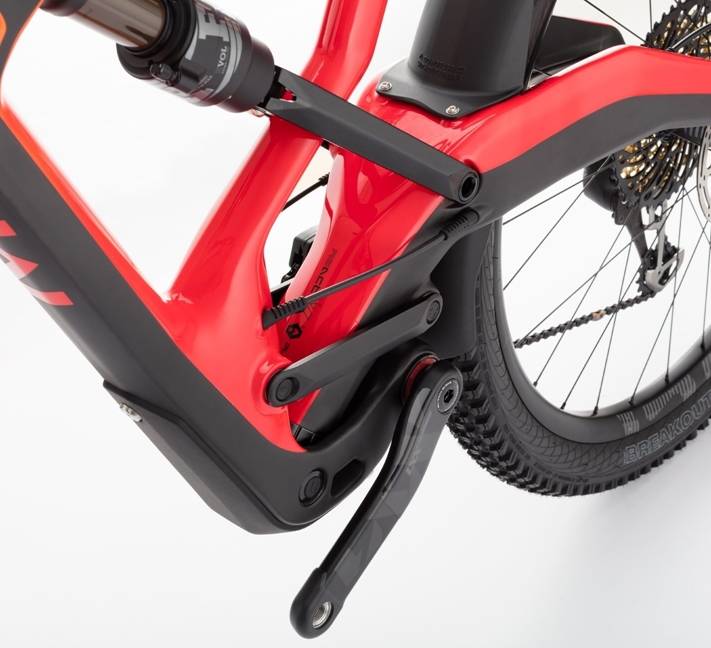
This article takes a look at some of the common suspension designs and some suspension design terminology. This will allow you to identify the differences in appearance and what some of the performance characteristics are.
Mountain Bike Suspension
An Awkward Start
One of the biggest evolutions in mountain bike technology since about 1990 has been rear suspension designs. What we enjoy today with so many bikes that have suspension designs that work so well is a result of many years of suspension that teased us with its potential but overall, did not deliver. Old designs typically suffered from mechanical issues of parts breaking or wearing out quickly and performance issues - often more gimmick than function.
An example of the questionable history of full-suspension mountain bikes was my first full-suspension bike. While it made me really excited at first, my mid '90s GT RTS's suspension was essentially ineffective while pedalling and the pivots wore out and made the bike feel like it would fall apart while riding: it took 1 month for this to happen.
Recent History 2005ish and newer
Some time around 2005 was when suspension design really started to evolve. Santa Cruz's Blur had been around for a couple years and seemed like one of the good new-school options at the time though it was one of more of an expensive bike. When Giant introduced Maestro suspension on 2006 model bikes (marketing and sales started in 2005) that was when we saw that some companies had great suspension designs and others in some cases were selling relative junk (just my opinion). Up until about 3 or 4 years ago I would still have refused to ride some brand's full suspension offerings...
The NOW of Suspension
I think we're living in a magical time for mountain bikes. With just a few minor exceptions, I think almost every brand out there is doing a really good job with the full suspension bikes they sell. We have entered an age where it isn't a case of one brand doing suspension well, and another doing it poorly. We now talk about some subtle characteristics that make one brand or model match a rider's riding style or location's terrain.
Why the Different Suspension Designs?
The number of suspension designs we see today is partially a result of that "Awkward Start". During the early days, bike companies recognized that improvements needed to be made to suspension and they were seeking something different for their marketing purposes. The result were some stupid designs and some that remain very relevant today - all the designs pictured below with the exception of the Marin Naild design and Yeti's Switch Infinity trace back to the mid '90s or before though they have been drastically improved upon.
Why are modern designs good?
Modern suspension designs out-perform old designs for 2 main reasons. 1)Durability - from the overall frame to the pivots and linkage, modern bikes are lasting longer and performing well for long periods, 2)The realization that chain-growth (aka anti-squat) is the key to suspension bikes pedalling efficiently without requiring heavy hydraulic damping or lock-outs. It also just so happened that the problem of brake-jack has been largely cured as a side effect of moving pivots to locations that result in desirable levels of anti-squat. Where once a short-dual-link suspension design would noticeably outperform a single pivot, it is now much more subtle and both can offer excellent ride characteristics.
Suspension Terminology
Pivot
Link
Virtual Pivot
Chain Growth
Shock Ratio
Progressivity
Brake Jack
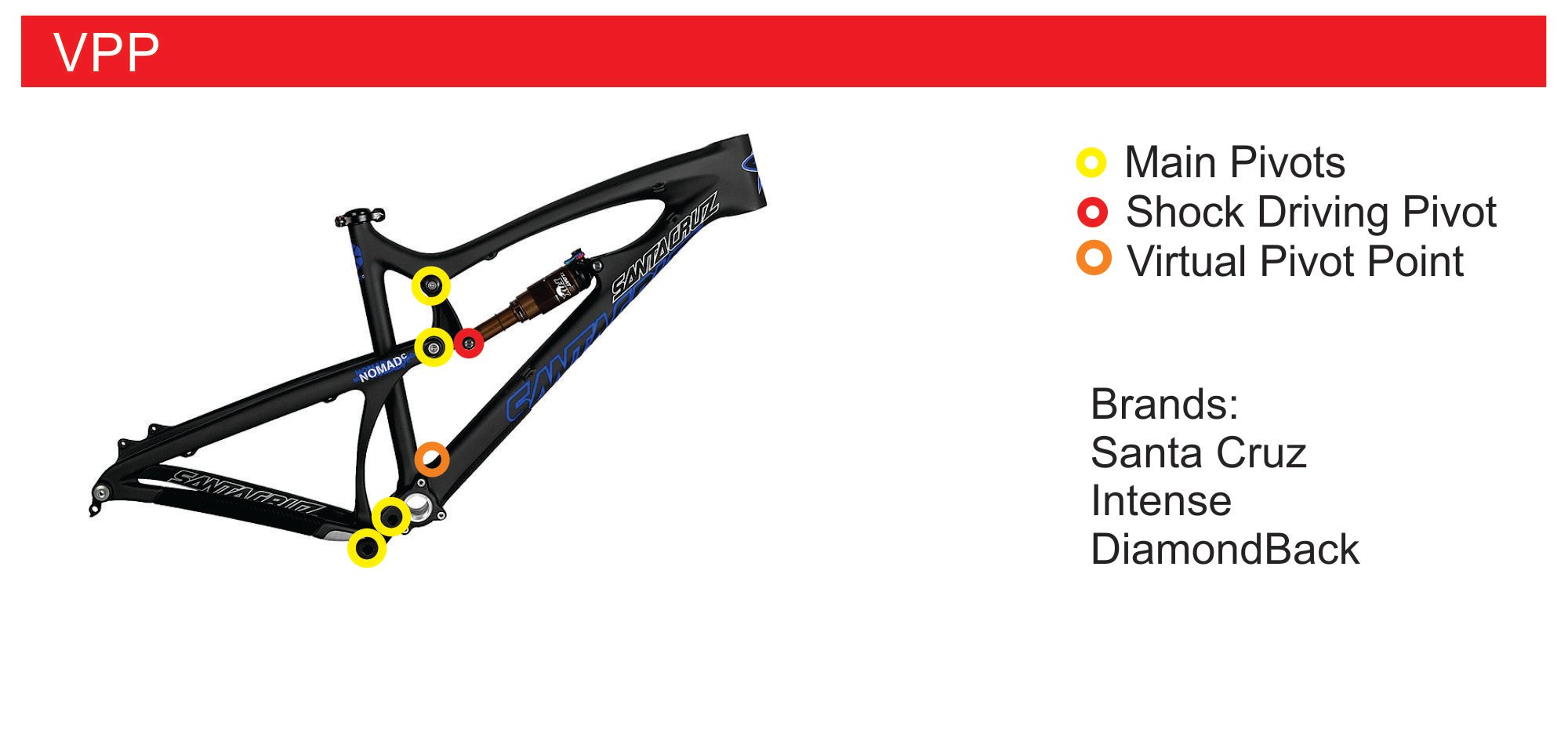 |
Interesting Fact: This suspension design is local! This famous suspension design was conceived in Calgary and was then licensed by Outland... then improved upon, adopted by Santa Cruz and Intense. The key to VPP is the 2 short links that move in opposite rotational directions. The virtual pivot point migrates forward as the suspension compresses. |
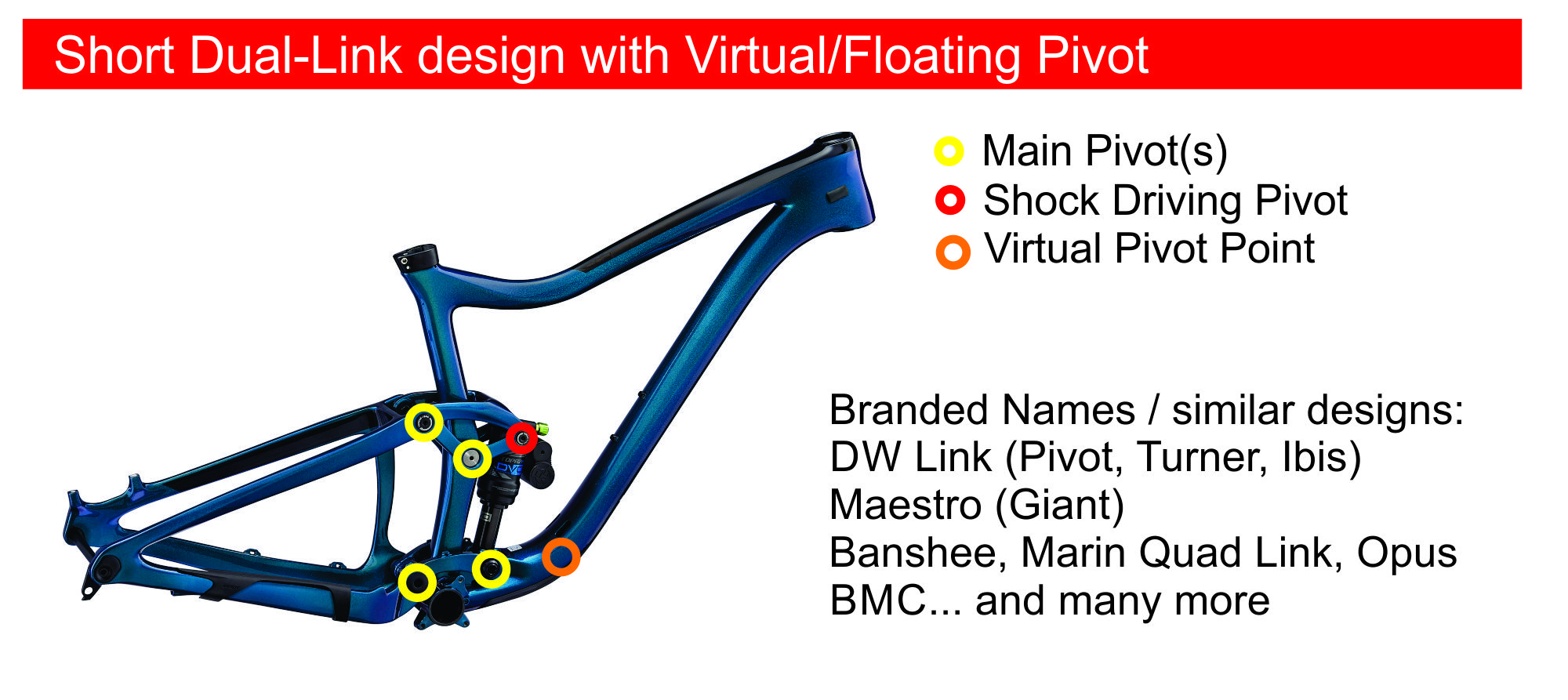 |
The difference between these short-dual-link designs and VPP is that the links rotate in the same direction and the virtual pivot moves from above & ahead of the bb towards the bb as the suspension compresses. One of my favorite qualities of how these ride (from time on bikes with Giant Maestro suspension) is the incredible small bump absorption combined with great pedalling efficiency and tendency to not bottom out harshly. |
 |
My personal definition of Horst Link is essentially a suspension design where there is a secondary pivot below and ahead of the rear axle along the chainstay. There is a subtle effect of a floating pivot created with Horst Link designs. One of the biggest attributes of well designed Horst Link bikes is minimizing "brake jack". |
 |
This design, used by Kona, Commencal and Marin is simple, durable and effective. Old versions were problematic for efficiency and brake jack. New designs have almost eliminated brake jack with modernized main pivot placement which has also made these pedal really efficiently. |
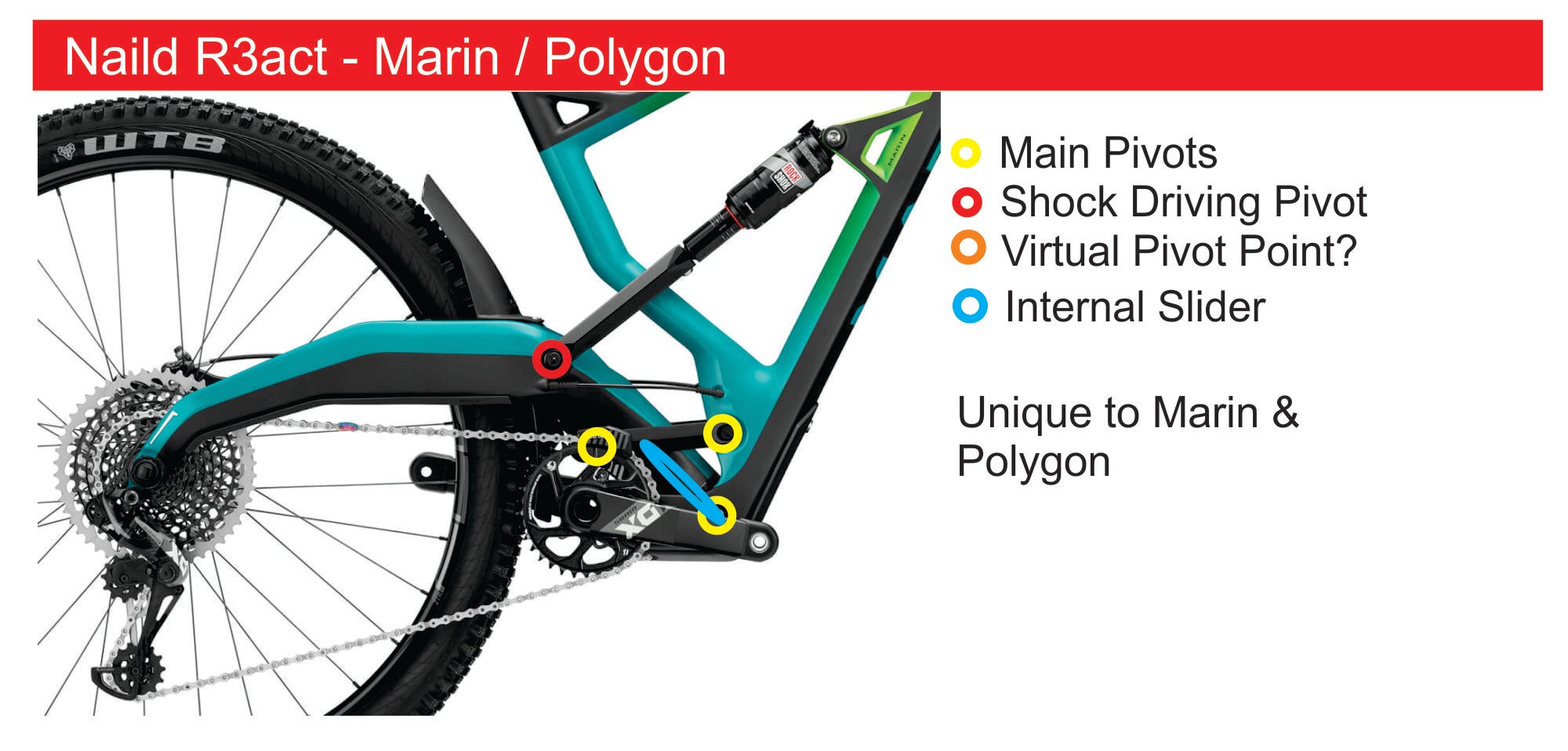 |
This design should perhaps be mentioned with Yeti's Switch Infinity design. In both cases (although they look completely different), there is some sort of extra magic which helps the bikes pedal super-efficiently. I personally think the Marin design (pictured) is the benchmark for ultimate suspension performance. |
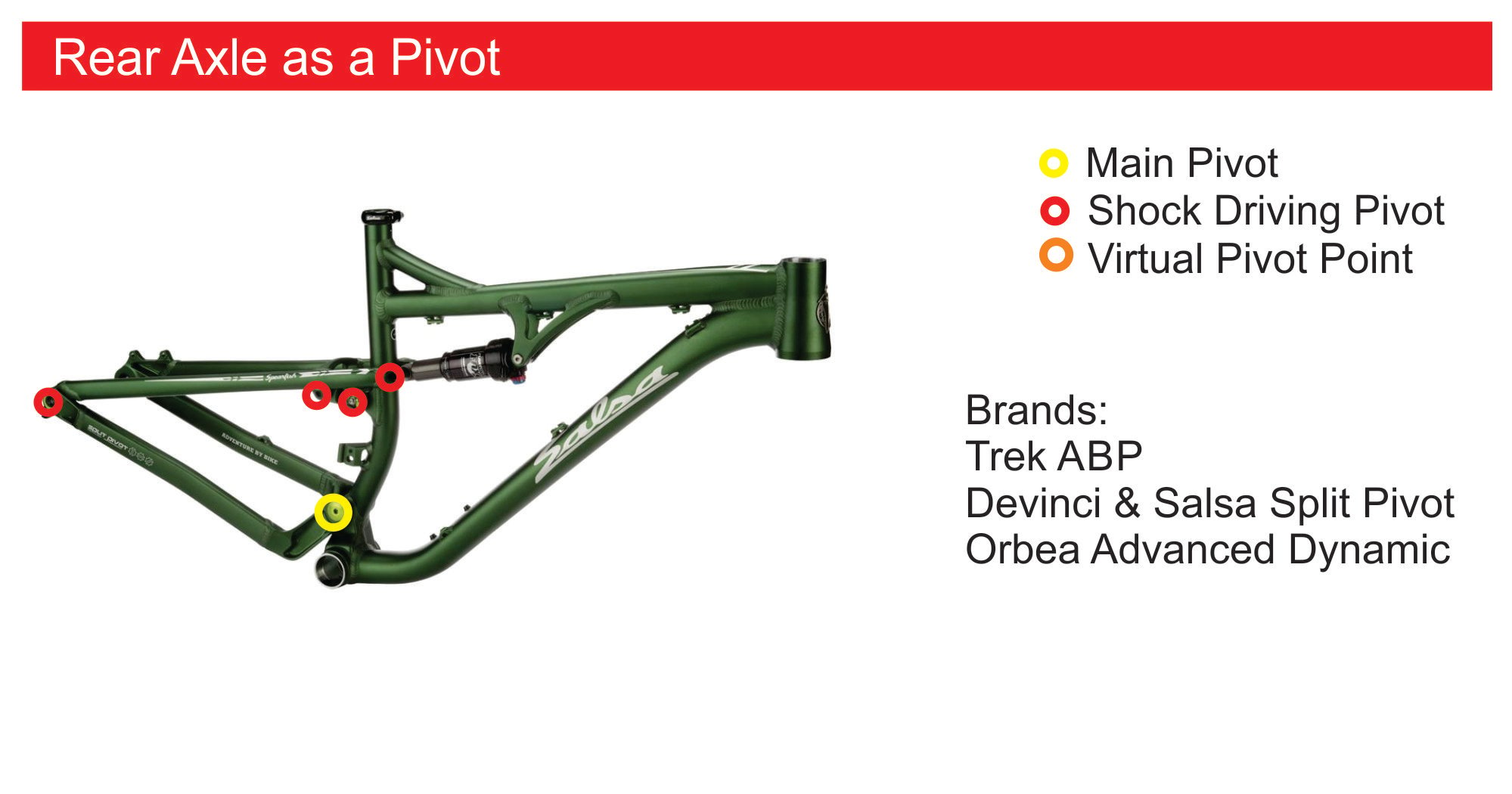 |
This design splits the difference between a Horst Link and Linkage driven single pivot but putting a rear pivot around the rear axle. In theory this was done to fix the problem of brake jack, the problem is mostly fixed on all modern suspension designs because of a re-think of main pivot placement. |
 |
This design moves the main pivot quite high above the bottom bracket which means the rear wheel moves back, away from the bottom bracket more than other designs. This helps maintain momentum but results in a large amount of chain growth (increasing distance between bb and rear axle). Excessive chain growth can have negative side-effects (suspension and pedalling forces fighting each other), but is neutralized by routing the chain over a pull placed roughly at the main pivot location. |
info

Comments
Be the first to comment...